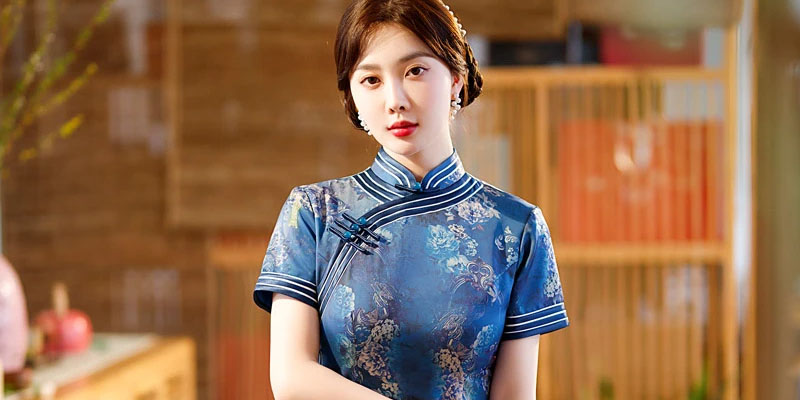
Introduction
Qipao and cheongsam are two iconic garments that have become synonymous with Chinese culture. While often used interchangeably, these two garments possess distinct characteristics that set them apart. This article delves into the differences between qipao and cheongsam, exploring their historical origins, design elements, and cultural significance.
Qipaos Historical Origins
The qipao, also known as the “mandarin gown,” originated in the Qing dynasty (1644-1912). It was initially worn by Manchu women as a formal court dress. The cheongsam, on the other hand, emerged in the early 20th century as a modernized version of the qipao. It was popularized by Shanghai socialites and became a symbol of the city’s cosmopolitan culture.
Qipao/Cheongsam Gown Design Elements
轮廓 The qipao is characterized by its form-fitting silhouette that accentuates the female figure. It typically features a high neckline, side slits, and a long, flowing skirt. The cheongsam, while also form-fitting, has a more relaxed silhouette with a lower neckline and shorter skirt.
Collar: The qipao traditionally has a high, mandarin collar that stands upright. The cheongsam, however, offers a wider range of collar styles, including low, rounded collars and V-necks.
Sleeves: Qipaos typically have long, narrow sleeves that extend to the wrists. Cheongsams, on the other hand, can have a variety of sleeve lengths, including short, elbow-length, and full-length sleeves.
Embroidery: Both qipaos and cheongsams often feature intricate embroidery. However, the embroidery on a qipao is typically more elaborate and traditional, while the embroidery on a cheongsam is often more modern and stylized.
Cultural Significance
Traditional Qipao: The qipao has long been associated with Chinese tradition and elegance. It is often worn at formal events and is considered a symbol of Chinese heritage.
Traditional Cheongsam: The cheongsam, on the other hand, represents a more modern and cosmopolitan aspect of Chinese culture. It is often seen as a symbol of Shanghai’s glamour and sophistication.
结论
While Chinese qipao and cheongsam share some similarities, they are distinct garments with their own unique histories, design elements, and cultural significance. The qipao embodies traditional Chinese elegance, while the cheongsam reflects the modern and cosmopolitan spirit of Shanghai. Understanding the differences between these two garments provides a deeper appreciation for the rich tapestry of Chinese culture.
